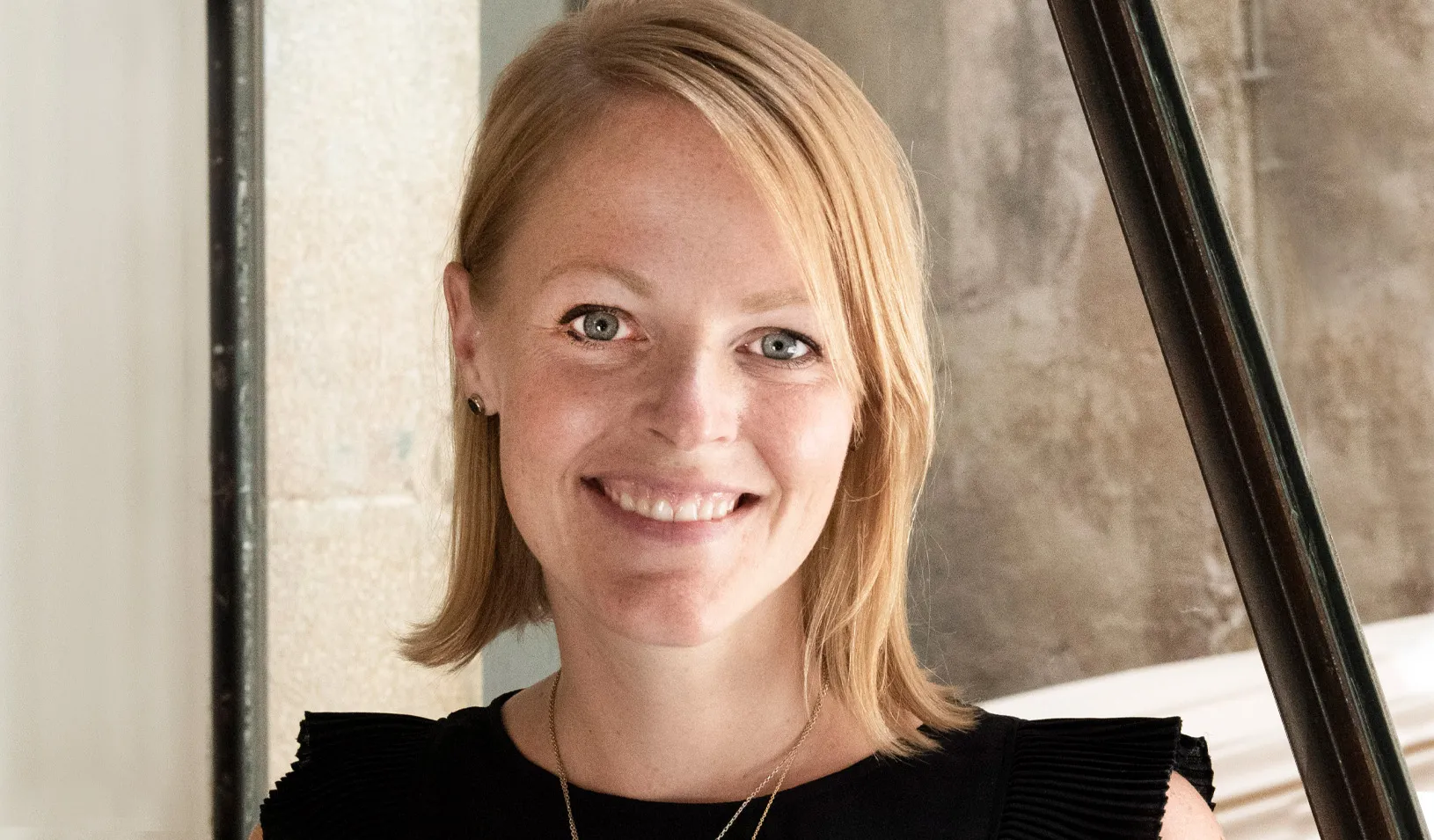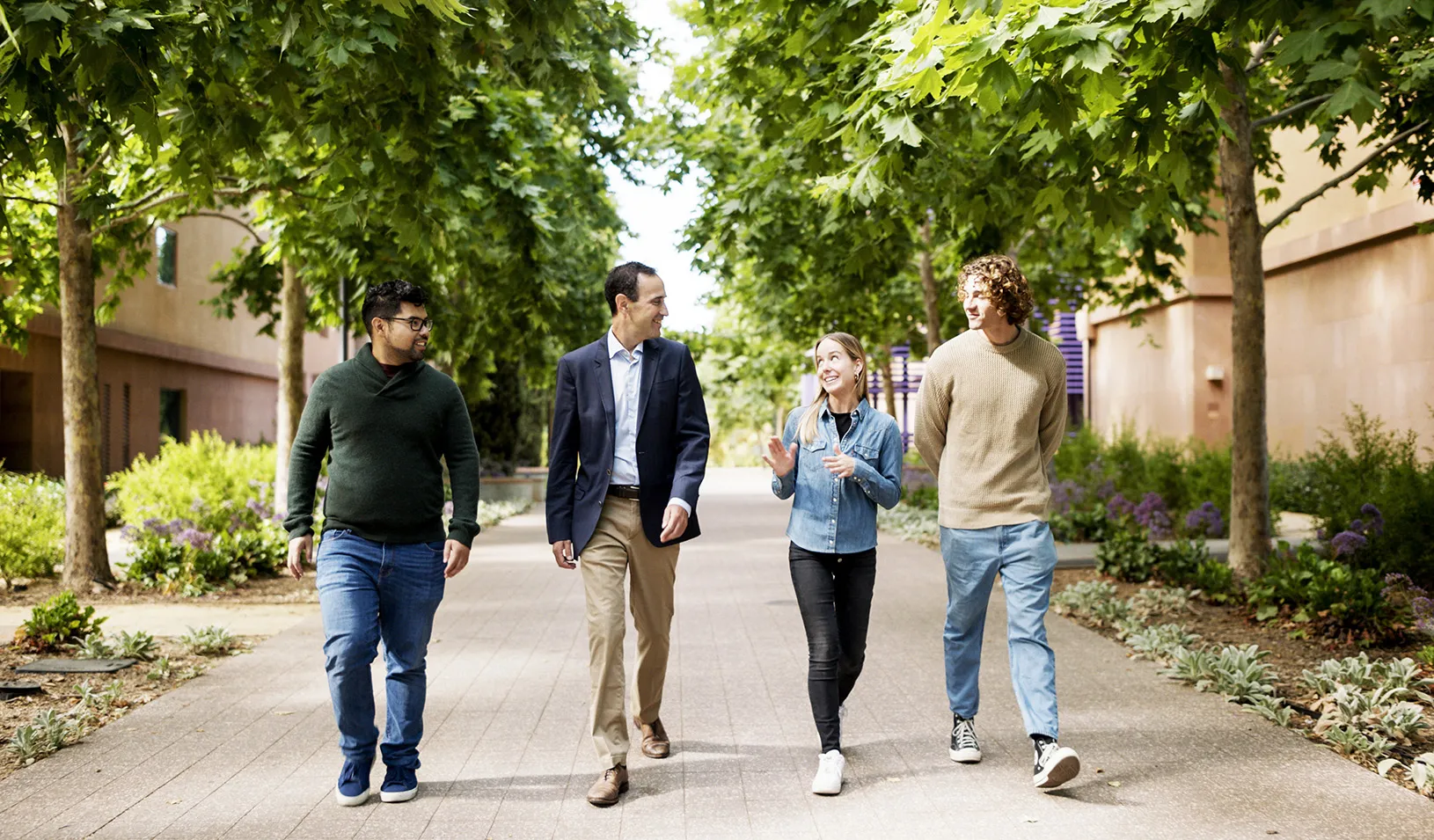How an African Academy Conceived at Stanford GSB Has Come Full Circle
More than 10 years ago, Fred Swaniker and Chris Bradford opened a prestigious prep school. Now its students are coming to Stanford to realize their own dreams.
February 14, 2018
Students reading | Brian Stauffer
More than a decade ago, Fred Swaniker, MBA ’04, and Chris Bradford, MBA ’05, MA Education ’06, met at Stanford GSB and dreamed of opening a prestigious preparatory school in Johannesburg, South Africa.
The entrepreneurs wanted to bring together students from across Africa to cultivate the continent’s future leaders. Since welcoming the first class in 2008, one of Swaniker and Bradford’s most gratifying moments came recently, when they learned that two students from the school’s first graduating class recently decided to follow in their footsteps to Stanford.
“The fact that it has come full circle is really inspiring,” Bradford says.
Ifedolapo Omiwole, MBA ’19, and Jihad Hajjouji, MBA ’18, graduated from the African Leadership Academy in 2010 and now sit at the same desks and study under the same professors that Bradford and Swaniker did more than a decade ago.
“Knowing Stanford GSB is the place that begot the African Leadership Academy, I thought if such great things come out of it, it must be a great place to be,” Hajjouji says. She credits the academy for developing her pan-African identity and transforming the course of her life.
Swaniker and Bradford have experienced some inspirational moments since their school opened. They met President Barack Obama at a town hall for young African leaders in 2010. And last year, Bradford and Swaniker watched as former student Ngor Majak Anyieth won an Echoing Green award for his work in South Sudan, where he opened a school that teaches a curriculum based on peace building. Bradford says this was another “full-circle” moment, as he and Swaniker had won the Echoing Green Fellowship a decade earlier.
“Right now we’re having the experience of seeing what former students are doing across the world,” Bradford says. “Our efforts are bearing fruit.”
Creating a New Generation of African Leaders
The seeds for this fruit were sown at Stanford GSB. When Bradford arrived with a degree in economics from Yale and teaching experience in London’s elite prep schools, he wanted to change the world through education. A friend in his business-planning class introduced him to Swaniker, a native of Ghana who had written a business plan for a school that would cultivate untapped talent across Africa. Swaniker grew up in various African countries and saw how wealthier families often sent their children abroad for school, leading to continental “brain drain.” He knew that many children lacked access to schools. Over countless cups of coffee and meetings that went late into the night, Swaniker and Bradford began designing an elite school for African youth.
“We shared the concern that many African students who are most prepared to tackle opportunities might not imagine the continent as a place to build their careers,” Bradford says.
Swaniker, an Arjay Miller scholar, took the lead managing the school, while Bradford designed a curriculum based on entrepreneurship, market-based solutions, rigorous academics, and self-discovery.
With help from a few Stanford GSB alumni, the African Leadership Academy welcomed its first class of 96 students from 29 different countries in 2008. In the first two years, the school’s budget was so tiny that the founders worked without pay. Since then, more than 750 students have graduated, accepting more than $100 million in scholarship funding from top universities including Stanford, Yale, Harvard, Cornell, and Princeton. But, perhaps more important to Swaniker and Bradford, more than 70% of the students have returned to Africa to begin their careers.
“Entrepreneurs succeed by solving problems for society, and guess what: We have so many problems just waiting to be solved in Africa!” Swaniker said during a recent talk at Stanford GSB. “For this reason, I call Africa an entrepreneur’s paradise.” Swaniker implemented a model at the Leadership Academy that encourages alumni to build careers in Africa: Students who promise to return to the continent before they turn 25 have their loans forgiven.
Looking Beyond Africa
Bradford and Swaniker’s school has become more than just a training ground for its students — members of its faculty and staff are also now studying at Stanford GSB, with plans to create similar schools. Diego Ontaneda, MBA ’18, who worked at the academy for three years as Bradford’s chief of staff, says he could have stayed at the school for another decade, but something called to him. “The thought that pushed me was how will I feel if no one has started a school like this in Latin America.” After he graduates, Ontaneda will dedicate himself full time to building Latin America Leadership Academy and cultivating future leaders for the 640 million people of Latin America.
“Once I combined how passionately I feel about this with the skills, networks, and resources within Stanford GSB, I realized I was trapped. I cannot not do this,” Ontaneda says with a laugh. Ontaneda spent summer and winter breaks launching leadership boot camps in Latin America. The camps are pilots for a larger, 18-month academy inspired by Bradford and Swaniker’s school.
Another former African Leadership Academy teacher, Kate Kraft, MBA ’17, MA Education ’17, has teamed up with Ontaneda to write the curriculum for the boot camps. Kraft studied curriculum construction while at the Graduate School of Education and received the Miller Social Change Leadership Award in 2017.
Bradford and Swaniker are also looking to expand their impact beyond South Africa. In 2016, Swaniker opened the African Leadership University, with campuses in Rwanda and Mauritius. CNN dubbed the school “the Harvard of Africa,” and Fast Company recognized it as the “third most innovative company in Africa.” Graca Machel, widow of Nelson Mandela, serves as the university’s chancellor. The university’s most recent class had more than 800 students.
Looking back on the African Leadership Academy’s modest beginnings 10 years ago, Bradford credits the Stanford community for inspiring people who aren’t afraid to “build their own adventure.”
“Fred and I set out to create one of the best schools in the world, and at Stanford it actually does seem like anything is possible,” Bradford says. “The energy and support of the network have sustained this from the beginning.”
For media inquiries, visit the Newsroom.
Explore More
Erin Nixon Joins Stanford GSB as Assistant Dean of Admissions

Nia Rose Froome, MBA ’23: Making Local, Fresh Food Available for All

New Research Fund Promotes Responsible Leadership for the Next Century
